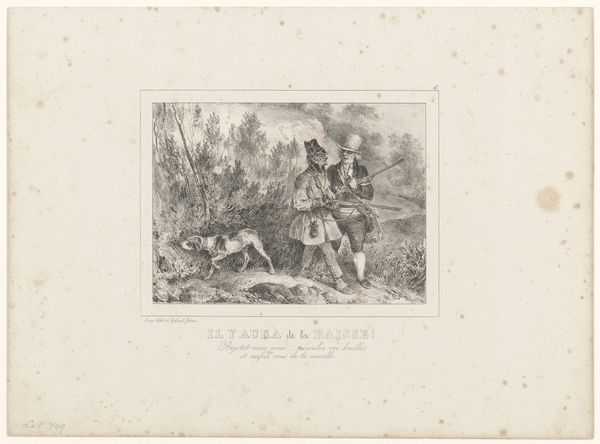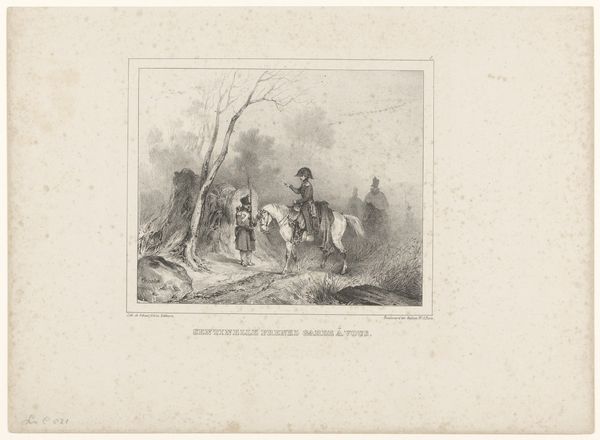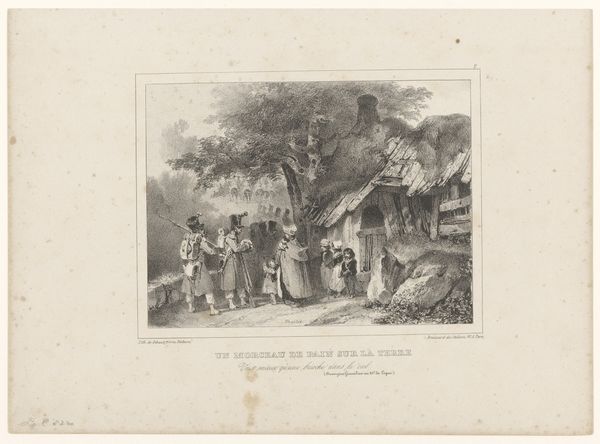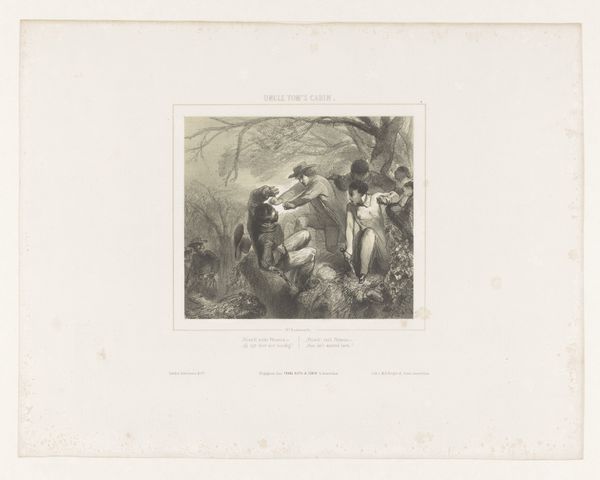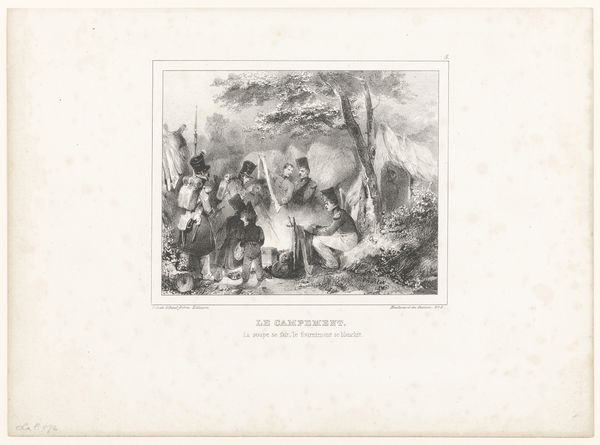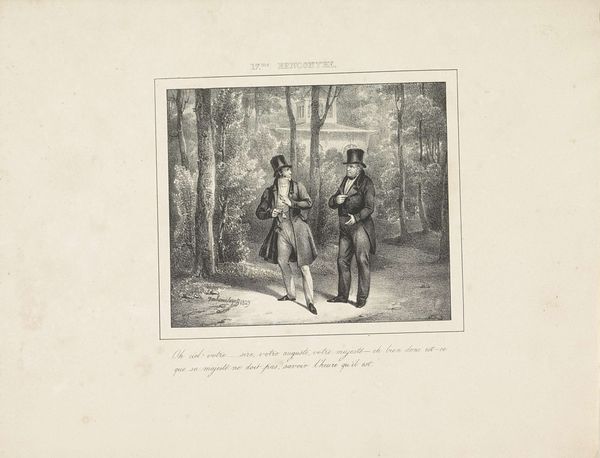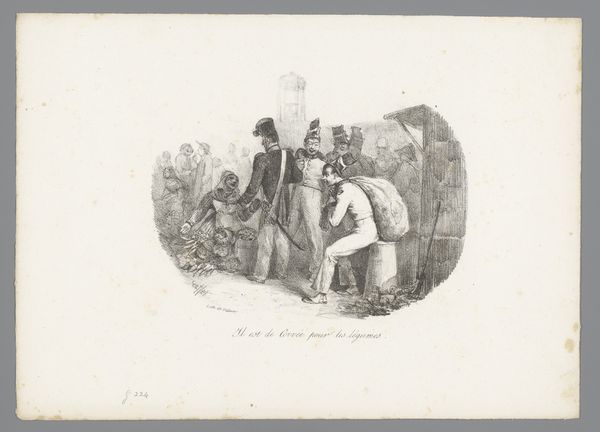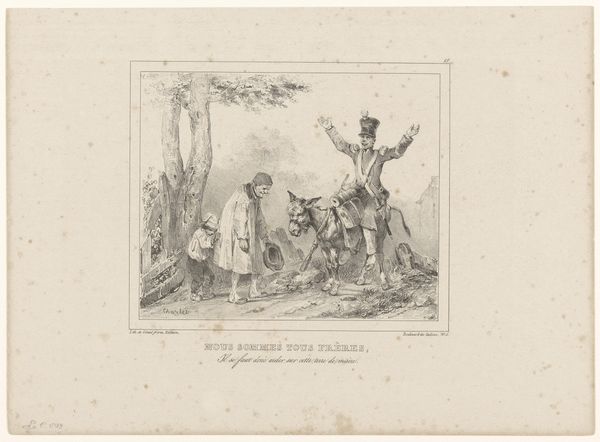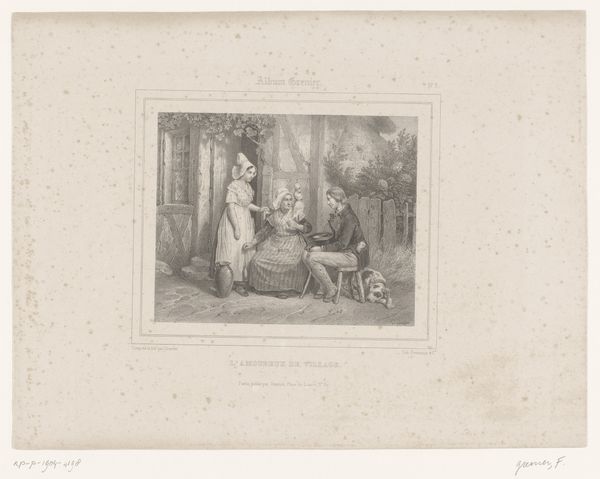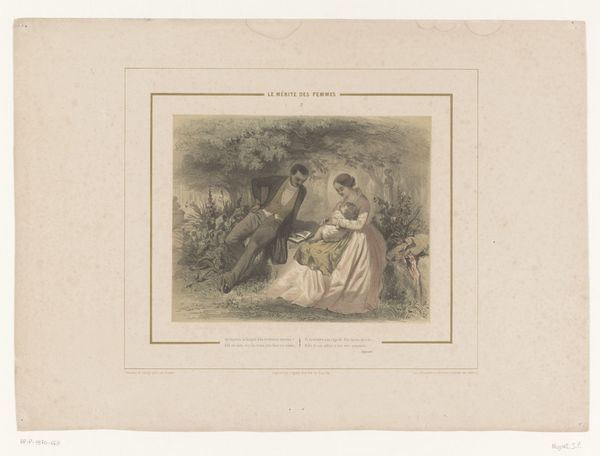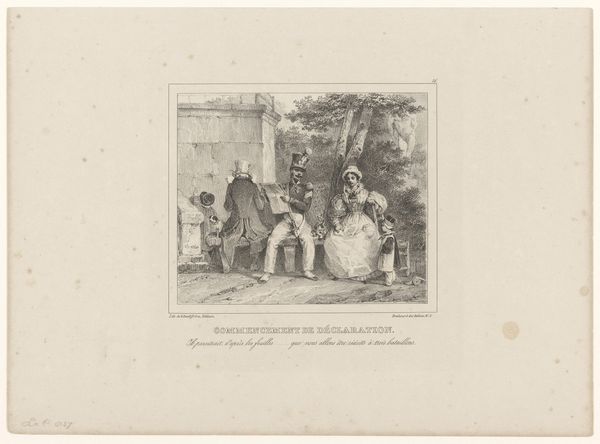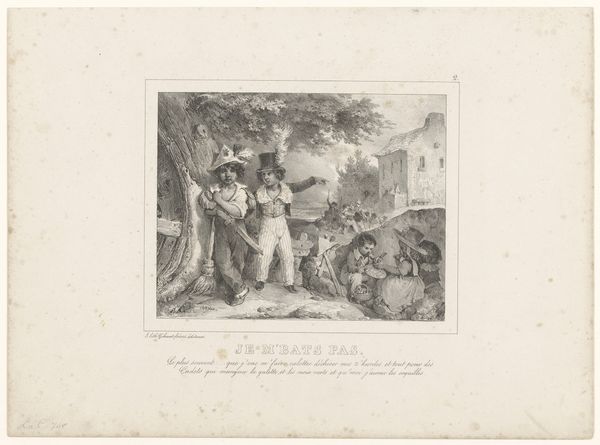
drawing, print, etching
#
portrait
#
drawing
#
narrative-art
# print
#
etching
#
landscape
#
figuration
#
romanticism
#
genre-painting
Dimensions: height 250 mm, width 338 mm
Copyright: Rijks Museum: Open Domain
Editor: Nicolas Toussaint Charlet's etching, "Jachtopziener klaagt over zijn kostuum" from 1830, presents a somewhat humorous scene. I'm struck by how it seems to capture a specific social interaction with some irony. How do you interpret this work in relation to the society of its time? Curator: Considering Charlet’s historical context, the scene speaks volumes about class distinctions and the burgeoning middle class of 19th-century France. How does the huntsman’s complaint about his attire reflect broader anxieties around social mobility and the performance of status? What visual clues point towards his discontentment with the established order, and who might the artist be subtly criticizing through this image? Editor: I notice that he is standing apart from the finely dressed family, with tattered clothing and gesturing wildly with his arm, which implies a direct address to a problem. Perhaps this is a criticism of those in power who would rather ignore their duties and responsibilities? Curator: Precisely! The work offers a commentary on the unequal distribution of resources. Romanticism valued nature and the individual, yet, in practice, these ideals were often restricted by social class. What role does the setting play in underscoring these social differences, and how does it challenge the traditional aristocratic associations with hunting? Editor: That makes perfect sense! The family seated leisurely by a large tree seems far removed from the huntsman’s world, amplifying that visual contrast between leisure and labour. Curator: Think about the institutions of art during this time as well, who was making and consuming art, and what that meant. It reveals a critical lens on the social norms perpetuated by those institutions, as well as artistic tropes that Charlet simultaneously embraces and subverts. Ultimately, art doesn’t just reflect society; it actively participates in shaping social dialogue and challenging existing hierarchies. Editor: I see what you mean. By looking at it as social critique instead of just a simple hunting narrative, the etching carries so much more historical and cultural depth. Thanks!
Comments
No comments
Be the first to comment and join the conversation on the ultimate creative platform.
